ACCA - P5 Study text - Emile Woolf INT - 2010
Подождите немного. Документ загружается.

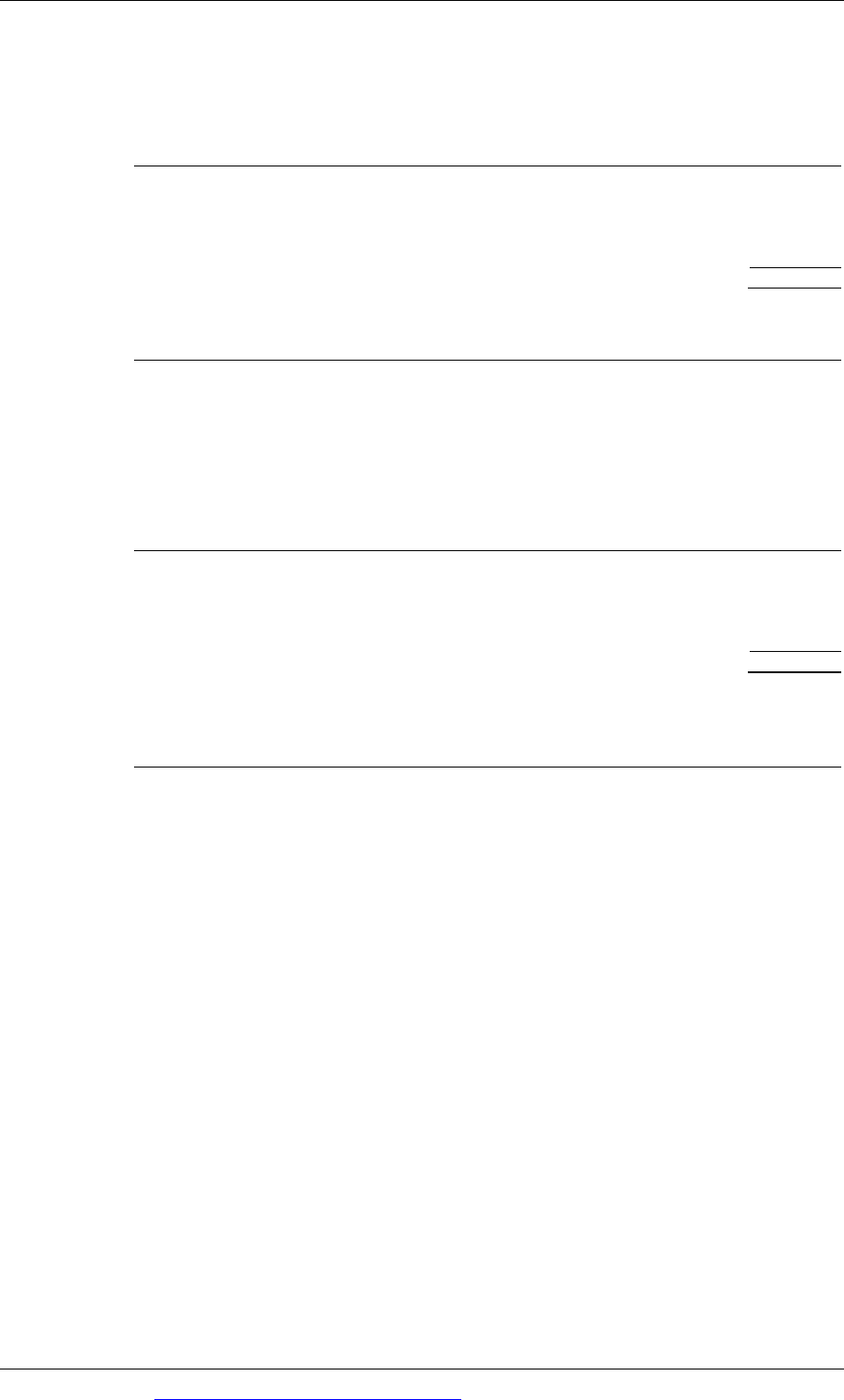
Answers
© EWP Go to www.emilewoolfpublishing.com for Q/As, Notes & Study Guides 535
39 Uncertain
(a) Most optimistic assumptions
Year
Equipment
Benefits
(+ 6%)
Costs
(- 10%)
Net cash flow
Discount
factor at 7%
Present
value
$m $m $m $m $m
0 (7.20)
(7.20)
1.000 (7.200)
1 6.36
2.70
3.66
0.935 3.422
2 8.44
3.60
4.88
0.873 4.260
3 5.30
2.70
2.60
0.816 2.122
+ 2.604
Year
Net cash
flow
Dep’n
Notional
interest
Residual
income
$m $m $m $m
1 3.66 (2.40)
7%
×
$7.2m
(0.50) + 0.760
2 4.88 (2.40)
7%
×
$4.8m
(0.34) + 2.140
3 2.60 (2.40)
7%
×
$2.4m
(0.17) + 0.030
(b) Most pessimistic assumptions
Year
Equipment
Benefits
(- 6%)
Costs
(+ 10%)
Net cash
flow
Discount
factor at 11%
Present
value
$m $m $m $m $m
0 (7.20)
(7.20)
1.000 (7.200)
1 5.64
3.30
2.34
0.901 2.108
2 7.52
4.40
3.12
0.812 2.533
3 4.70
3.30
1.40
0.731 1.023
(1.536)
Year
Net cash
flow
Dep’n
Notional
interest
Residual
income
$m $m $m $m
1 2.34 (2.40)
11%
×
$7.2m
(0.79) (0.750)
2 3.12 (2.40)
11%
×
$4.8m
(0.53) + 0.190
3 1.40 (2.40)
11%
×
$2.4m
(0.26) (1.260)
(c) The decision whether or not to go ahead with the project will depend on
management’s view of risk:
What is the probability of the most likely, most pessimistic and most
optimistic outcome?
What is the appetite of management for risk?
40 Two divisions
(a) An optimal transfer price (or range of transfer prices) is a price for an
internally-transferred item at which:
the selling division will want to sell units to the other profit centre, because
this will add to its divisional profit
the buying division will want to buy units from the other profit centre,
because this will add to its divisional profit
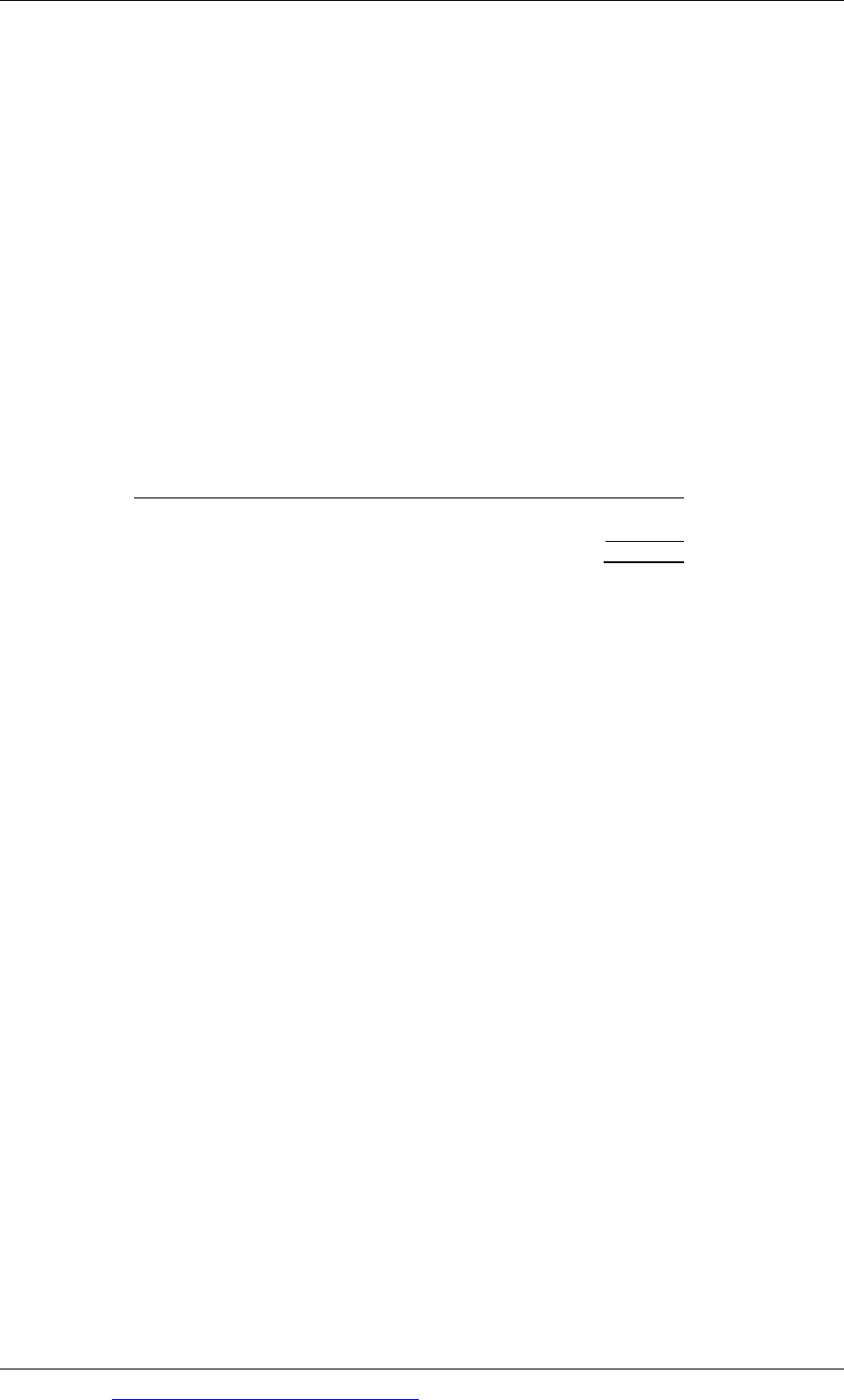
Paper P5: Advanced performance management
536 Go to www.emilewoolfpublishing.com for Q/As, Notes & Study Guides © EWP
the internal transfer will be in the best interests of the entity as a whole,
because it will help to maximise its total profit.
(b) When Division X has spare capacity, its only cost in making and selling extra
units of Product B is the variable cost per unit of production, $48. Division Y
can buy the product from an external supplier for $55.
It follows that a transfer that is higher than $48 but lower than $55, for
additional units of production, will benefit both profit centres as well as the
company as a whole. (It is in the best interests of the company to make the
units in Division X at a cost of $48 than to buy them externally for $55.)
(c) When Division X is operating at full capacity and has unsatisfied external
demand for Product A, it has an opportunity cost if it makes Product B for
transfer to Division Y. Product A earns a contribution of $16 per unit ($62 –
$46). The minimum transfer price that it would require for Product B is:
$
Variable cost of production of Product B 48
Opportunity cost: lost contribution from sale of Product A
16
Minimum transfer price to satisfy Division X management
64
Division Y can buy the product from an external supplier for $55, and will not
want to buy from Division X at a price of $64. The maximum price it will want
to pay is $55.
The company as a whole will benefit if Division X makes and sells Product A.
It makes a contribution of $16 from each unit of Product A.
If Division X were to make and sell Product B, the company would benefit
by only $7. This is the difference in the cost of making the product in
Division X ($48) and the cost of buying it externally ($55).
The same quantity of limited resources (direct labour in Division X) is needed
for each product, therefore the company benefits by $9 ($16 – $7) from making
units of Product A instead of units of Product B.
On the basis of this information, the transfer price for Product X should be $64
as long as there is unsatisfied demand for Product A. At this price, there will
be no transfers of Product B.
41 Training company
(a) If the Liverpool centre has spare capacity, it will be in the best interest of the
company for the London centre to use Liverpool trainers, at a variable cost of
£450 per day including travel and accommodation, instead of hiring external
trainers at a cost of £1,200.
Since the Liverpool centre will have to pay £450 per trainer day, any transfer
price per day/daily fee in excess of £450 would add to its profit.
Since the London centre can obtain external trainers for £1,200 per day, any
transfer price below this amount would add to its profit.

Answers
© EWP Go to www.emilewoolfpublishing.com for Q/As, Notes & Study Guides 537
An appropriate transfer price would therefore be a price anywhere above £450
per day and below £1,200 per day.
(b) If the Liverpool centre is operating at full capacity and is charging clients £750
per trainer day, there will be an opportunity cost of sending its trainers to
work for the London centre. The opportunity cost is the contribution forgone
by not using the trainers locally in Liverpool. Assuming that the variable cost
of using trainers in Liverpool would be £200 per day, the opportunity cost is
£550 (£750 – £200).
The minimum transfer price that the manager of the Liverpool centre would
want is:
£
Variable cost of trainer day 200
Travel and accommodation
250
Opportunity cost: lost contribution
550
Minimum transfer price 1,000
The maximum price that the London centre would be willing to pay is £1,200,
which is the cost of using an external trainer.
The company should encourage the use of Liverpool trainers by the London
centre, because this will add to the total company profit.
The optimal transfer price is above £1,000 per day, so that the Liverpool centre
will benefit from sending trainers to London, but below £1,200 so that the
London centre will also benefit.
A transfer price of £1,000 per day might be agreed.
(c) If the Liverpool centre is operating at full capacity and is charging clients
£1,100 per trainer day, the opportunity cost of sending its trainers to work for
the London centre is £900 (£1,100 – £200).
The minimum transfer price that the manager of the Liverpool centre would
want is:
£
Variable cost of trainer day 200
Travel and accommodation
250
Opportunity cost: lost contribution
900
Minimum transfer price 1,350
The maximum price that the London centre would be willing to pay is £1,200,
which is the cost of using an external trainer.
It would be in the best interests of the company as a whole to use the
Liverpool trainers to work for Liverpool clients, earning a contribution of £900
per day, rather than use them in London to save net costs of £750 per day
(£1,200 – £200 – £250).
The transfer price should be set at £1,350 per trainer day. At this rate, the
London centre will use external trainers, and all the Liverpool trainers will be
used in Liverpool.
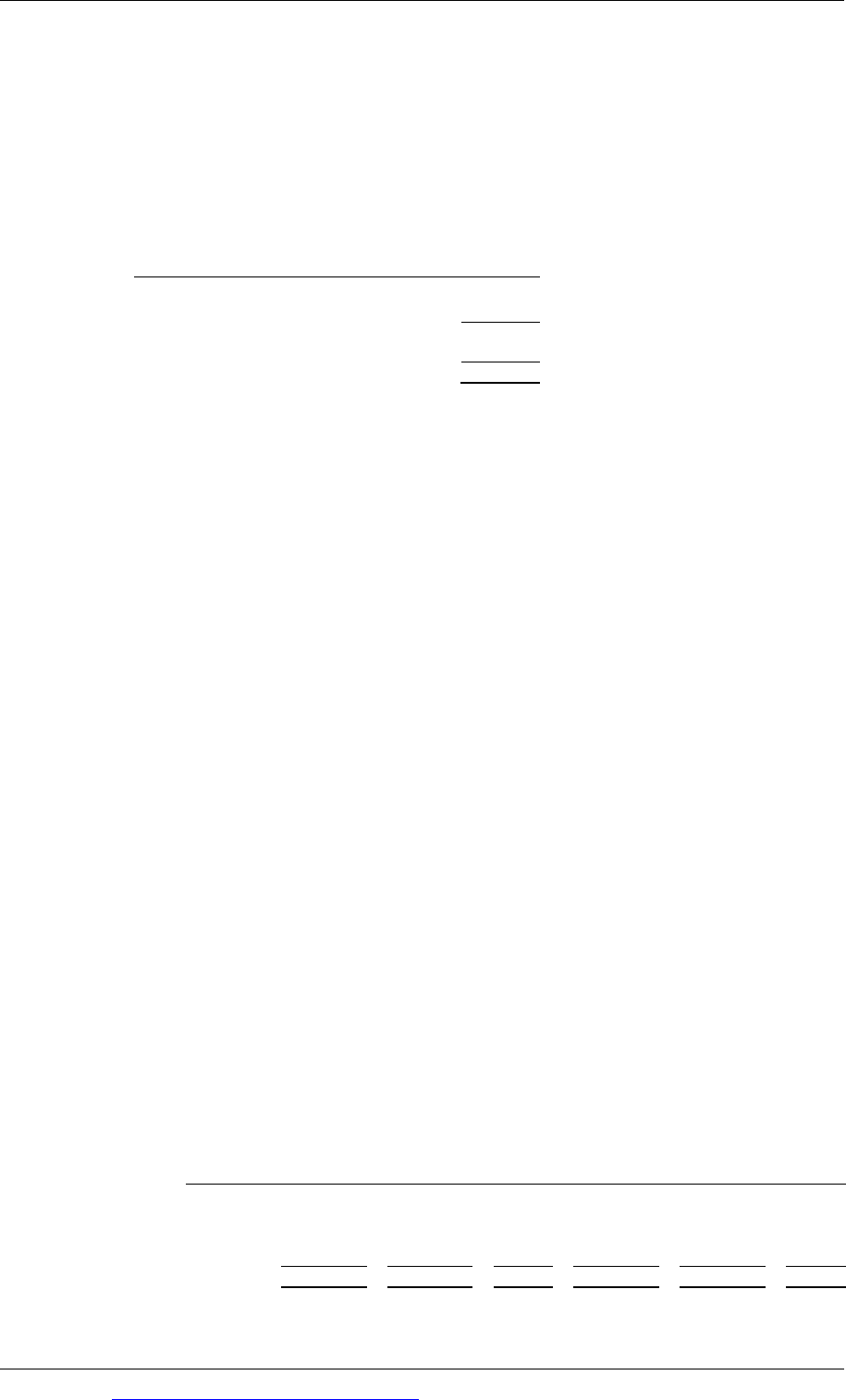
Paper P5: Advanced performance management
538 Go to www.emilewoolfpublishing.com for Q/As, Notes & Study Guides © EWP
42 Shadow price
(a) The shadow price of the special chemical is the amount by which total
contribution would be reduced (or increased) if one unit less (or more) of the
chemical were available.
1 kilogram = 1,000 grams; therefore one kilogram of special chemical will
produce 100 tablets (1,000/10 grams per tablet).
Shadow price of the chemical $
Sales value of 100 tablets (× $10)
1,000
Further processing costs in B (
×
$2)
200
800
Variable cost of making the chemical in A
500
Shadow price per kilogram of chemical
300
(b) The special chemical does not have an intermediate market.
The ideal transfer price for A is therefore any price above the variable cost
of making the chemical, which is $500 per kilogram.
The ideal transfer price for B is anything below the net increase in
contribution from processing a kilogram of the chemical. This is $1,000 –
$200 = $800 per kilogram.
There is no single ideal price. Any price in the range above $500 and below
$800 should make the managers of both profit centres want to produce up
to the capacity in division A.
A transfer price in the middle of the range, say $650, might be agreed.
(c) The transfer price is needed to share the profit from selling the tablets between
divisions A and B. It is an internally-negotiated price. Changing the price will
not affect the total profit for the company as a whole, provided that division A
produces the chemical up to its production capacity.
The transfer price itself should not be used as a basis for judging performance.
Having agreed a transfer price, key financial measures of performance will be
control over costs for division A and control over costs and the selling price
for tablets for division B.
(The divisions are profit centres, and so the performance of the divisional
managers should not be assessed on the basis of ROI or residual income.)
43 Bricks
(a) Profit statements
(i) Operating at 80% capacity
Transfer price $200
Transfer price $180
Group X Group Y Total Group X Group Y Total
Sales:
External 180
240
420
180 240 420
Transfers 120
-
0
108 - 0
Total 300
240
420
288 240 420
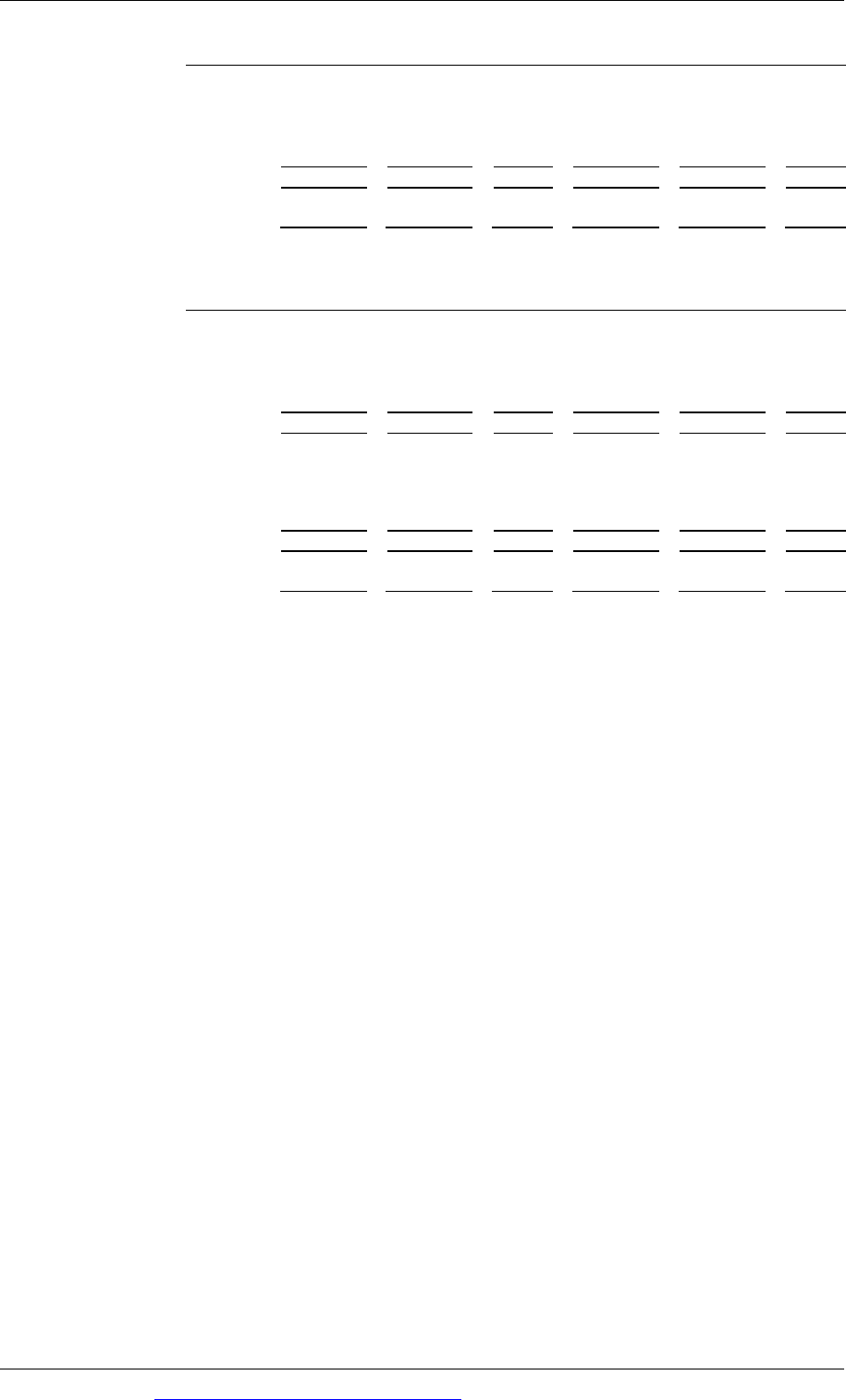
Answers
© EWP Go to www.emilewoolfpublishing.com for Q/As, Notes & Study Guides 539
Transfer price $200
Transfer price $180
Group X Group Y Total Group X Group Y Total
Costs
Transfers -
(120)
0
- (108) 0
Variable (112)
(36)
(148)
(112) (36) (148)
Fixed (100)
(40)
(140)
(100) (40) (140)
Total (212)
(196)
(288)
(212) (184) (288)
Profit 88
44
132
76 56 132
(ii)
Operating at 100% capacity
Transfer price $200
Transfer price $180
Group X Group Y
Total
Group X Group Y
Total
Sales:
External 180
320
500
180 320 500
Transfers 200
-
0
180 - 0
Total 380
320
500
360 320 500
Costs
Transfers -
(200)
0
- (180) 0
Variable (140)
(60)
(200)
(140) (60) (200)
Fixed (100)
(40)
(140)
(100) (40) (140)
Total (240)
(300)
(340)
(240) (280) (340)
Profit 140
20
160
120 40 160
(b) The effect of a change in the transfer price from $200 to $180 will result in
lower profit for Group X and higher profit for Group Y, but the total profit for
the company as a whole will be unaffected.
A reduction in the transfer price to $180 (or possibly lower) is recommended,
because this is the price at which Group Y can buy the materials externally. At
any price above $180, Group Y will want to buy externally, and this would not
be in the interests of the company as a whole.
Significantly, at a transfer price of both $200 and $180, Division Y would suffer
a fall in its divisional profit if it reduced the selling price of bricks to $0.32 and
increased capacity by 40,000 bricks each month. A reduction in price would be
in the best interests of the company as a whole, because total profit would rise
from $132,000 per month to $160,000.
(c) Ignoring the transfer price, the effect on Division Y of reducing the sale price
of bricks to $0.32 would be to increase external sales by $80,000 and variable
costs in Division Y by $24,000 (400 tonnes × $60). Cash flows would therefore
improve by $56,000 per month. To persuade Division Y to take the extra 400
tonnes, the transfer price should not exceed $140 ($56,000/400). This is below
the current external market price, although there is strong price competition in
the market.
The transfer price for Division X should not be less than the variable cost of
production in Division X, which is $70 per tonne.
However, if the transfer price is reduced to $140 per tonne or less, Division X
might try to sell more materials in the external market, by reducing the selling
price.
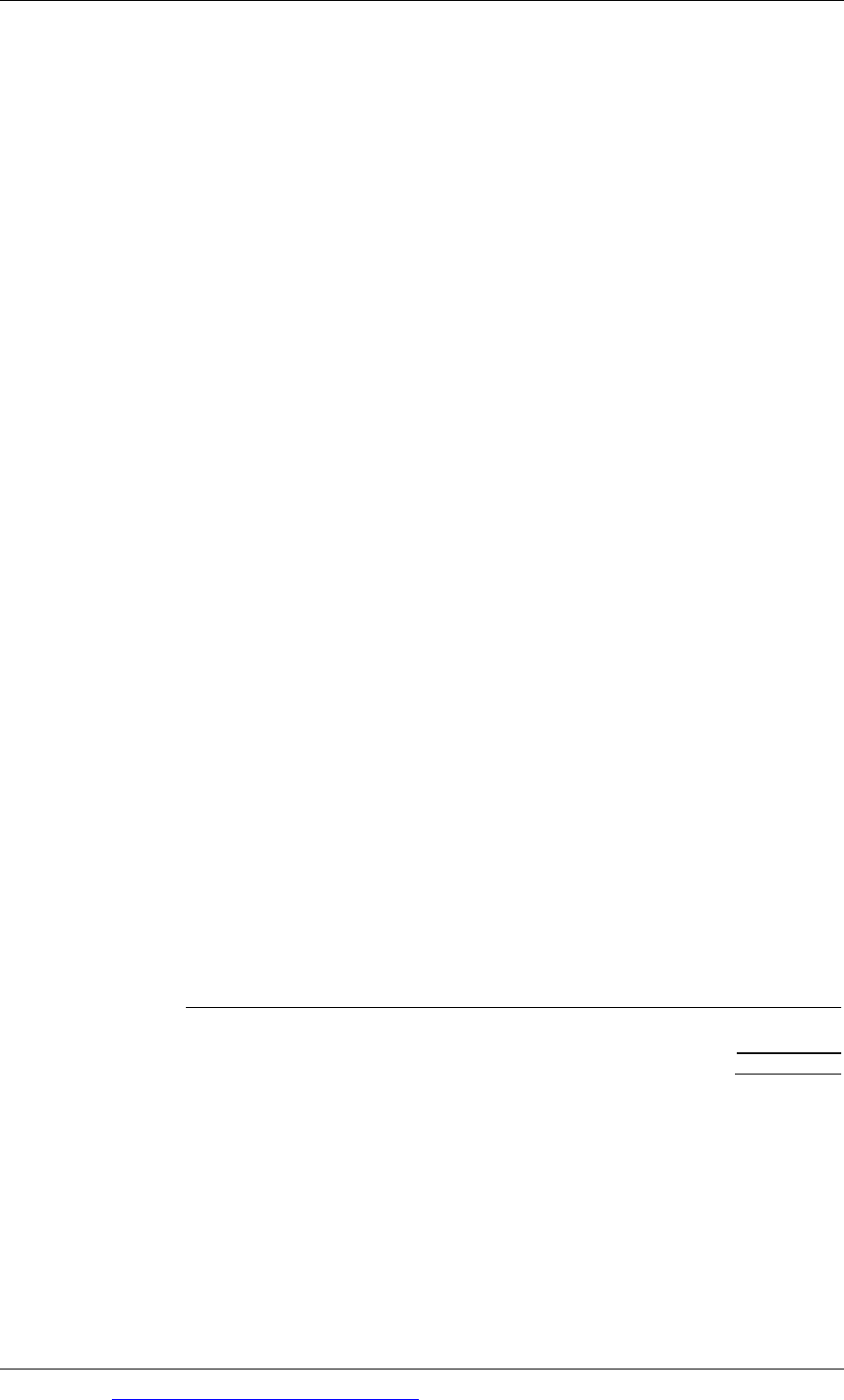
Paper P5: Advanced performance management
540 Go to www.emilewoolfpublishing.com for Q/As, Notes & Study Guides © EWP
It would appear that although the ideal transfer price might be $140 or below,
this will not be easily negotiated between the group managers. An imposed
settlement may be necessary. Intervention by head office might be needed to
impose a transfer price, and require Division Y to reduce its sales price to
$0.32.
44 International transfers
(a) The transfer price for Product P would be $9 less 40% = $5.40.
Division Y could buy from an external supplier at $5 per unit.
The manager of Division Y will want to maximise the profits of the division.
The decision will therefore be to purchase Product P from the external
supplier. This will be $0.40 per unit cheaper than buying from Division X.
This decision will be made regardless of the annual purchase quantity.
(b) The annual profit of the company as a whole will be maximised if the
marginal revenue for the company from making the transfers exceeds the
opportunity cost.
(i) Annual purchases: 50,000 units of Product P
Division X has spare production capacity for 50,000 units of Product P.
The marginal cost to Division X and to the company as a whole from
making and transferring 50,000 units of Product P is therefore the
marginal cost of producing them, $3.40 per unit.
A transfer price anywhere above $3.40 and below $5 would increase the
annual profit of Division X and would make Division Y want to buy the
units from Division X and not externally at $5.
(ii) Annual purchases: 120,000 units of Product P
Division X has spare production capacity for 50,000 units of Product P,
but producing the additional 70,000 units means that production and
sales of Product Q would have to be reduced by 70,000 units.
The opportunity cost for Division X and for the company as a whole of
transferring 120,000 units to Division Y is therefore:
$
Variable cost of making 120,000 units
× $3.40
408,000
Contribution lost: 70,000 units of Product Q
×
$0.50
35,000
443,000
The minimum transfer price should be excess of $443,000/120,000 units
= $3.692 per unit.
The transfer price should therefore be negotiated in the range $3.70 to
$5. Any transfer price between these two amounts would result in
higher profits for the company, Division X and Division Y (on the
reasonable assumption that Division Y will sell Product P at a price
higher than the transfer price.)
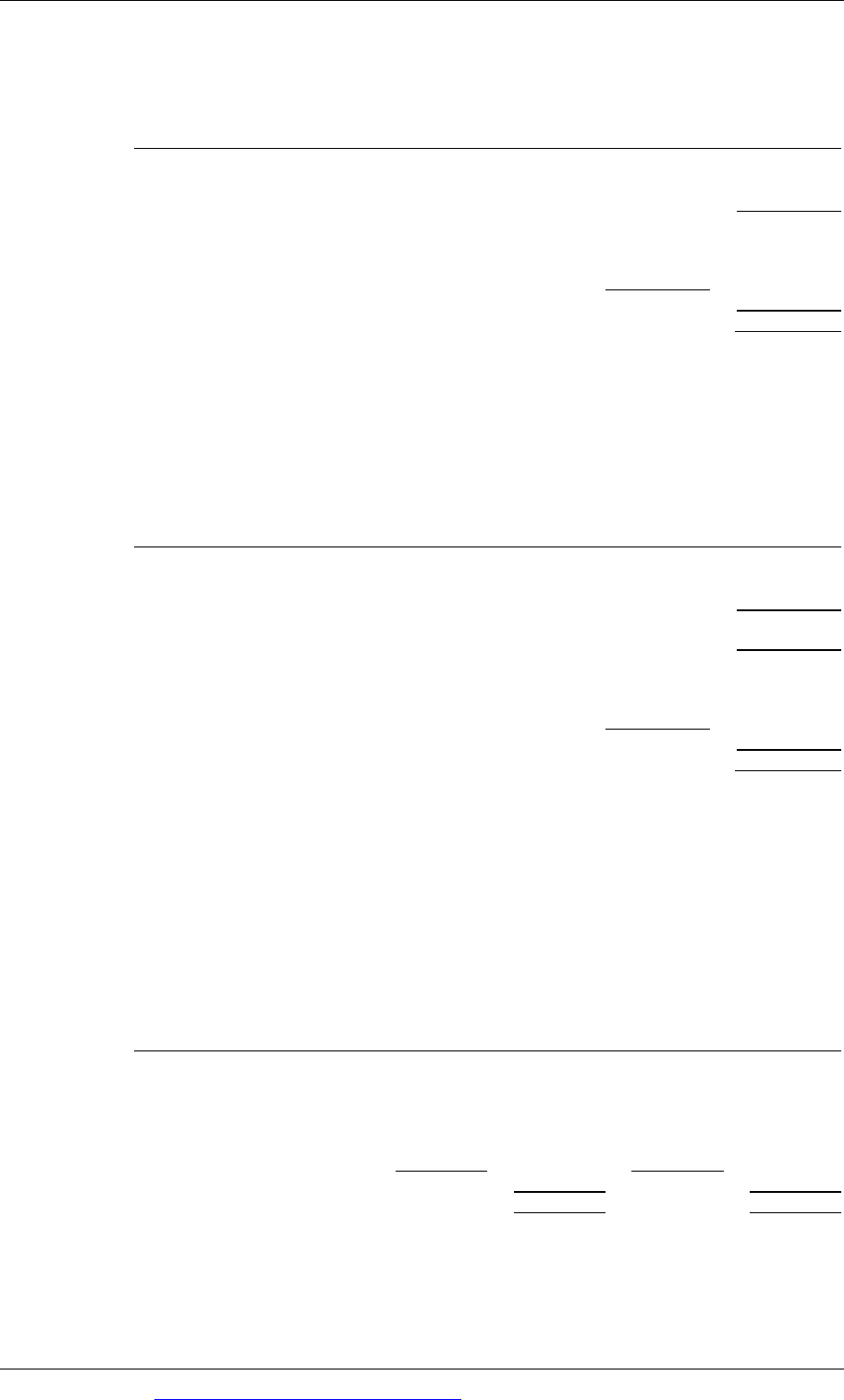
Answers
© EWP Go to www.emilewoolfpublishing.com for Q/As, Notes & Study Guides 541
(c) If Division Y buys 120,000 units of Product P externally at $5 per unit, the
after-tax position of the company as a whole would be as follows:
$ $
Division X
Contribution from selling 70,000 units of Product Q
35,000
Less tax at 50% (17,500)
After-tax contribution, Division X
17,500
Division Y
Cost of buying 120,000 units of P externally (at $5)
(600,000)
Less tax at 30% 180,000
Cost net of tax, Division Y
(420,000)
Cost to the company (402,500)
(
Tutorial note: Revenue from selling the units of Product P in Country Y can
be ignored because this is the same regardless of whether the units are
transferred from Country X or bought externally.)
If Division Y buys 120,000 units of Product P from Division X at $5.40 per unit,
the after-tax position of the company as a whole would be as follows:
$ $
Division X
Transfer of 120,000 units of P at $5.40
648,000
Variable cost of 120,000 units of P at $3.40
408,000
Contribution from 120,000 units of Product P
240,000
Less tax at 50% (120,000)
After-tax contribution, Division X
120,000
Division Y
Cost of buying 120,000 units of P (at $5.40)
(648,000)
Less tax at 30% 194,400
Cost net of tax (453,600)
Total cost to the company
(333,600)
Conclusion
It is in the best interests of the company as a whole for Division Y to purchase
the units of Product P from Division X. This will result in an annual profit
after tax that is higher by $68,900 ($402,500 – $333,600).
45 Long and Short
(a) Group contribution (per unit and in total)
RDZ BL
$ $ $ $
Selling price
45
54
Components used
S (3 : 2) 18
12
M (2 : 4) 8
16
Processing costs 12
14
Cost
38
42
7
12
(
×
200)
(
×
300)
Group contribution
1,400
3,600
Total contribution = $1,400 + $3,600 = $5,000

Paper P5: Advanced performance management
542 Go to www.emilewoolfpublishing.com for Q/As, Notes & Study Guides © EWP
(b) Divisional contribution
(i) Transfer price (variable cost + shadow price): supplying divisions
A B
$ $
S: (6 + 0.5) 6.50
M: (4 + 2.75)
6.75
Less variable cost
6.00
4.00
Contribution per unit
0.50
2.75
(ii) Buying divisions
RDZ BL
$ $ $ $
Selling price
45.0
54.0
Less
Transfer price
S: (3:2) 19.5
13.0
M: (2:4) 13.5
27.0
Processing cost 12.0
14.0
45.0
54.0
Contribution per unit
0.0
0.0
(c) All contribution arises in the supplying divisions. This will be unacceptable to
the buying divisions, and so will have an adverse affect on the promotion of
these two products.
(d)
Transfer price
Transfer price =
price)clearing Marketor(
cost
y
Opportuni
t
cost
Variable
=
+
S = $6.00 + (5% × $6.00) = $6.30
M = $7.50 – $0.50 = $7.00
Contribution of end-products in buying divisions
RDZ BL
$ $ $ $
Selling price
45.0
54.0
Less
Transfer price
S: (3:2)
18.9
12.6
M: (2:4)
14.0
28.0
Processing cost 12.0
14.0
44.9
54.6
Contribution per unit
0.1
(0.6)
Therefore do not produce BL.
Strategy
Produce RDZ: Maximum possible.
Constraint?
S 2,400 units/3 units of S per unit of RDZ = 800 units
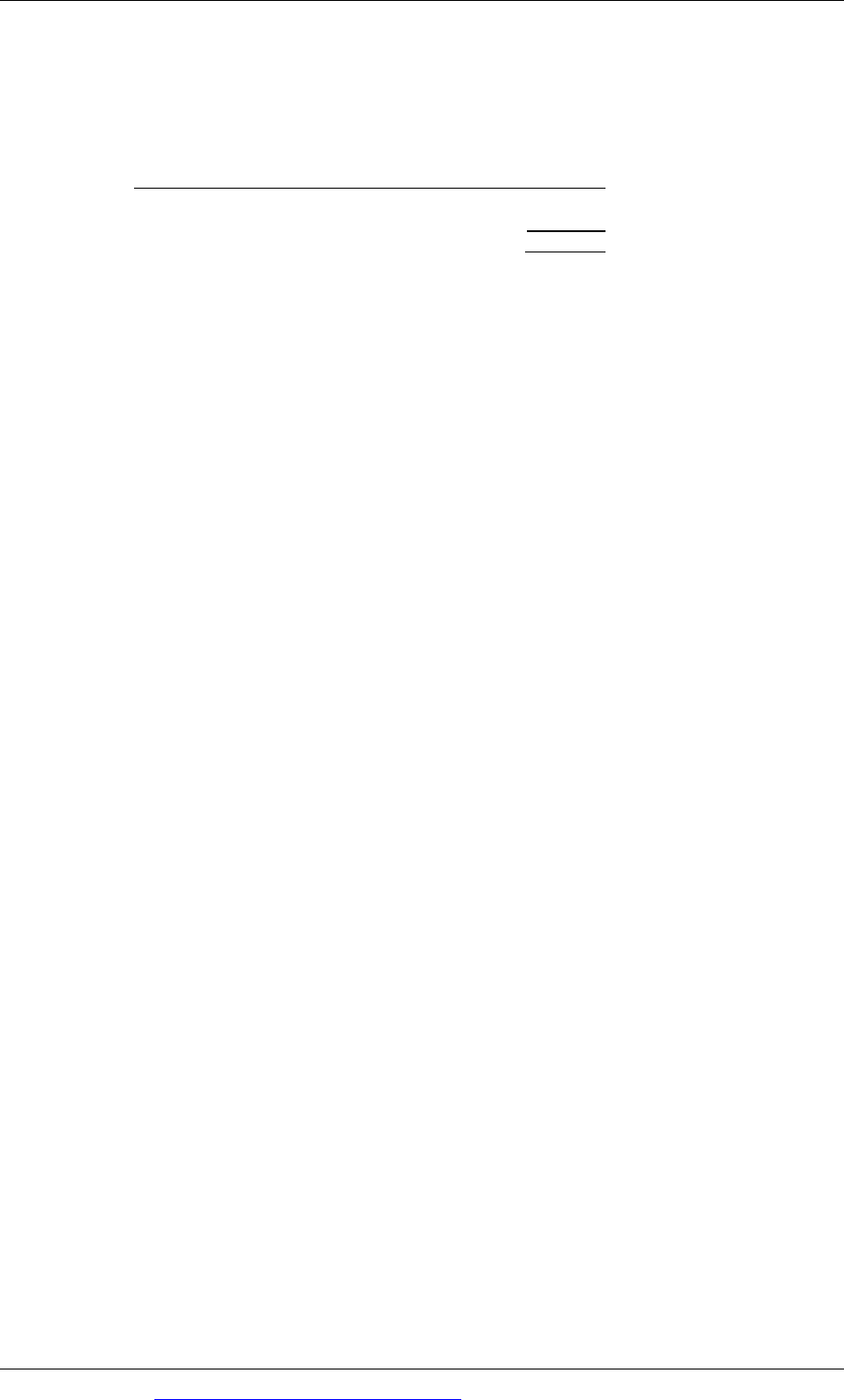
Answers
© EWP Go to www.emilewoolfpublishing.com for Q/As, Notes & Study Guides 543
M 3,200 units/2 units of M per unit of RDZ = 1,600 units
Therefore produce 800 units of RDZ and sell the remaining 1,600 units of M
externally.
Total contribution for group
$
800 units of RDZ × $7/unit (see part (a)) 5,600
1,600 units of M × $3/unit ($7
–
$4)
4,800
Total group contribution 10,400
46 Balanced
(a) The four perspectives for performance targets and measuring performance in
a balanced scorecard approach are:
(1) a customer perspective: identifying what customers value most
(2) an internal systems perspective: identifying the processes that must be
performed with excellence to satisfy customers
(3) an innovation and learning perspective: what must the organisation do
to innovate or add to its knowledge and experience
(4) a financial perspective.
(b)
A professional football club
Here are some suggestions
Customer perspective
Customers value:
results, winning
an enjoyable time at football matches: being entertained (for example, with
food and drink).
Targets for performance might be:
the size of attendances at matches
results (points, position in the league table, promotion)
revenue from catering: number of meals sold before matches.
Internal processes perspective
Processes that must be excellent to support customer expectations might
include ticket selling, getting customers into the ground quickly on match
days, catering efficiency, effective security and policing, and so on.
Targets for performance might be:
number of season ticket sales
targets for number of spectators per minute going through each turnstile
speed of producing meals in the catering area
number of incidents and police arrests on match days.
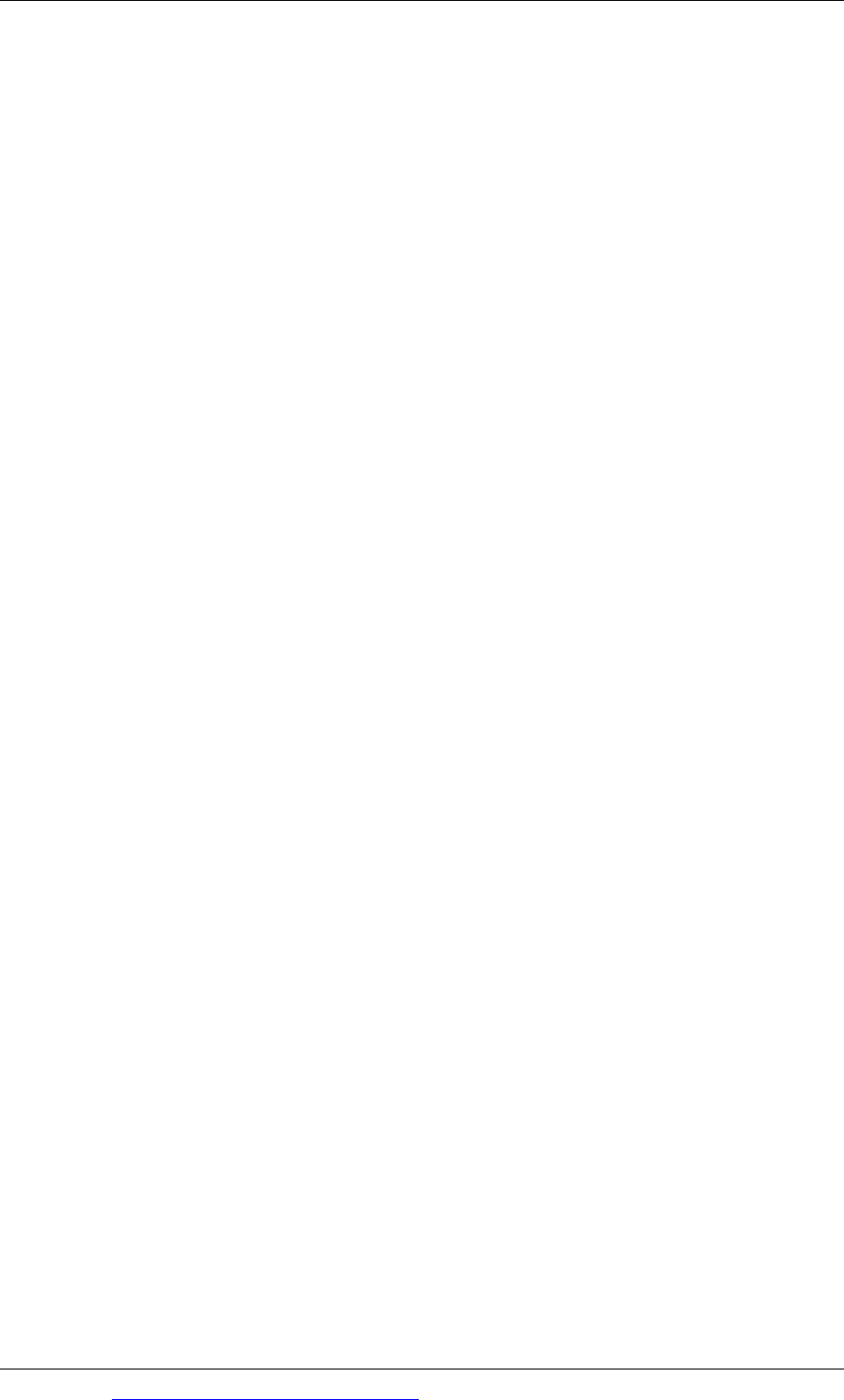
Paper P5: Advanced performance management
544 Go to www.emilewoolfpublishing.com for Q/As, Notes & Study Guides © EWP
Innovation and learning perspective
Value can be created by developing well-trained footballers through coaching
and training, and possibly selling them in the transfer market to make profits.
Targets for performance might be:
average fitness levels for players
average number of hours of training each week per player
revenue from transfers
Financial perspective
Presumably, the football club will be expected to make profits for its owners.
Targets for performance might be profits each year, and return on investment.
Subsidiary financial targets might be average wages per player, and revenue
from sponsorship deals.
47 Pyramid
(a) The performance pyramid describes a view that all measures of performance
for an organisation should be linked and consistent with each other. There is a
hierarchy of suitable measures of performance, with performance measures at
lower levels in the hierarchy (or pyramid) supporting performance measures
at a higher level.
(1) At the bottom of the pyramid, there are operational performance
measures, relating to external effectiveness and internal efficiency.
(2) Operational performance measures support higher-level measures that
should relate to quality, delivery, production or service cycle time and
waste.
(3) These measures of performance support measures of performance at an
even higher level in the pyramid, relating to customer satisfaction,
flexibility and productivity.
(4) These measures of performance support measures relating to market
satisfaction and financial performance.
(5) Together, measures of market satisfaction and financial performance
support the achievement of the organisation’s objectives.
The performance pyramid recognises that external and market measures of
performance are as important as financial performance and internal efficiency
in achieving the long-term objectives of the organisation.
(b) Dimensions of performance in service industries may be measured primarily
by:
(1) financial performance and
(2) competitiveness.
These should be supported by performance in four other dimensions:
(1) service quality
(2) flexibility
(3) resource utilisation and
(4) innovation.
